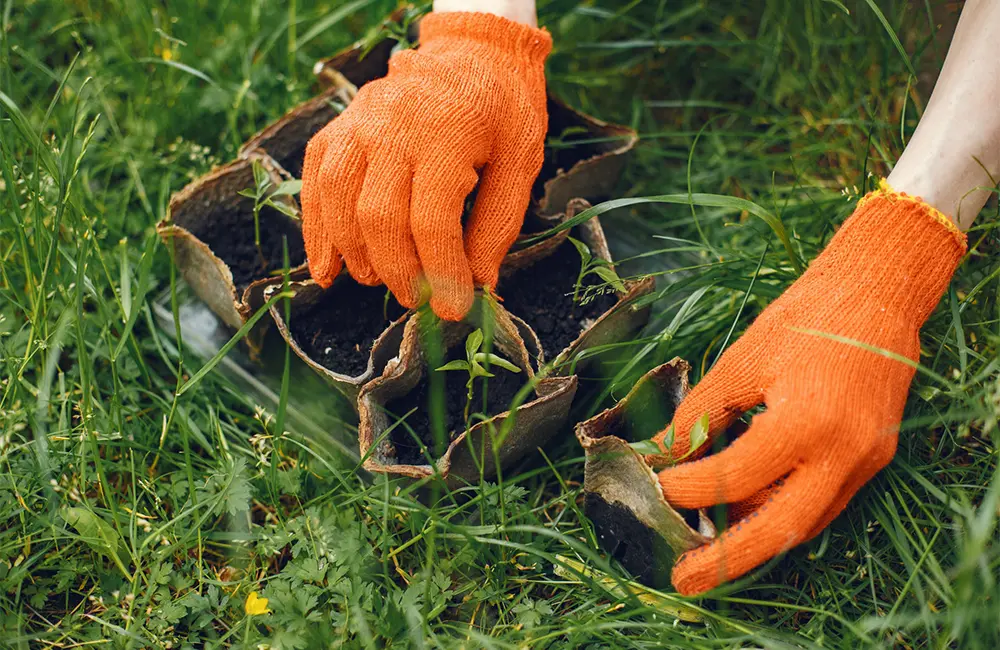A healthy lawn does not happen overnight. It needs care in every season. Weather, soil, and plants change throughout the year. Grass must adjust to heat, cold, and rain. With seasonal lawn maintenance, your yard stays strong. It stays green and fresh in every change.
Why Seasonal Care Matters?
Seasonal care gives your lawn good health. Each season brings stress to the grass and soil. Without care, lawns turn thin and weak. Weeds can spread fast, and pests can take control. Soil will become hard and lose airflow. A lawn can quickly lose its life. Follow our seasonal yard maintenance schedule!
With seasonal care, you can manage the problems early. Spring growth starts strong when the soil is clear. Summer stress gets manageable with water and shade. Fall builds food reserves for the winter season. Winter protection will protect roots from frost and salt. Each season builds strength for the next.
Spring: Support the Yard
Spring is the season of a fresh start. Your yard wakes up from a long rest. It needs cleaning and new nutrients fast. Weeds can take over quickly if you neglect the yard. The first job is spring and fall lawn cleanup. Rake the lawn and remove dead leaves. Clear all branches that block soil and grass. Open space helps air and light to reach the roots.
You must aerate the soil to support airflow. If the soil is too packed, it will not get adequate nutrients. This weakens roots. Aeration means to create holes that permit the air, nutrients, and water to enter the soil.
Fertilizer is also important in the spring. Use a ready-made fertilizer with nitrogen. Fertilizer supports growth and prevents thin patches. You must add grass seed in bare spots, too. Thick lawns will fight weeds naturally and stay full.
Watering is vital, but it must be steady. Deep watering once or twice is enough. Shallow watering builds weak roots that struggle to survive. Morning watering decreases evaporation and fungus risk.
Summer: Keep the Yard Cool
Summer brings long days and hot sun. Grass can burn and dry without care. Drought, pests, and weeds grow fast in the heat. Summer lawn maintenance keeps the grass safe and steady. Mowing height is the first summer rule. Cut the grass high to protect the roots. Longer blades give shade to the soil. Short grass dries and burns in the hot sun.
Make sure to water it deeply but less frequently. Early morning watering is highly recommended for lawns. This is a way to prevent the evaporation of water. Weeds grow fast in hot months. Regular checks keep them from overtaking the grass. Hand pulling works well for small problems.
Keep an eye on insects like grubs and beetles. They feed on roots and cause brown spots. You must use organic treatments if you see early signs. Address this issue quickly to prevent damage across the yard.
Fall: Build Strength for Winter
Fall is the season of repair, when your lawn will recover from heat and stress. It also prepares for the winter season. Fall care builds strength that lasts all year.
Rake fallen leaves and keep the soil clear. If you ignore the leaves, they block sunlight. This creates fungus and kills healthy grass. Regular raking keeps the yard clean and bright.
Fertilize with a strong solution for roots. Fall fertilizer should be rich in potassium. This strengthens the roots and builds food reserves for the cold. Fertilizer keeps roots alive under snow and frost.
You must overseed thin patches with quality grass seed. Cool weather supports fast germination and growth. New grass thickens lawns and prevents weed spread. You must follow all seasonal weed control methods. A dense lawn survives the winter more easily.
Mowing in the fall is important. Keep the grass at a medium balanced height. Do not leave it too long or too short. Balanced mowing helps the grass to survive the snow.
Winter: Protect the Yard
Winter is a quiet but important season. People often assume that they do not need to follow the winter lawn protection tips. Grass rests under frost, ice, and snow. Even without growth, your lawn needs care. Winter damage can last into the spring months.
Avoid heavy foot traffic on the grass. Walking crushes roots and creates dead paths. Use walkways and avoid stepping on frozen soil. Do not pile snow in one place. Heavy piles damage the grass under them. You should spread snow evenly to protect the yard.
Salt is harmful to grass and soil. Use sand or pet-safe products as salt burns roots and leaves brown damage marks. Winter is also a time for planning. Check your tools and sharpen mower blades. You must repair any equipment. A ready tool set makes spring work easier.
Benefits of Year-Round Care
Seasonal lawn care is important for multiple reasons. Proper lawn mowing and watering practices support the health of the grass. Here are the benefits:
- Green grass all year long.
- Strong roots and thick coverage.
- Natural weed and pest control.
- Safe space for play and rest.
A green yard also adds property value. Homes look better with healthy outdoor spaces. Families enjoy more time outdoors with friends, family members, or neighbors.
Common Mistakes in Lawn Care
Many people skip or rush lawn work. This causes weak lawns and wasted effort. Here are some mistakes to avoid;
1. Cutting Grass Too Short
Many people cut the grass too low. This weakens the roots over time. Short grass dries quickly in summer heat, and the weeds will grow fast. The grass should be slightly higher to protect the soil.
2. Overwatering the Lawn
Watering too much is another mistake. Many people water shallowly every day. This does not help deep roots grow. Shallow watering makes lawns weak and thin. It also wastes water and money. You must water deeply only two times per week.
3. Skipping Fertilizer Before Winter
Lawn fertilization by season is important. Some people forget winter lawn feeding. Fertilizer in the fall strengthens grass roots. Without it, lawns will become weak in winter. Cold stress harms the thin grass quickly.
4. Walking on Icy Grass
Another mistake is walking on frozen lawns. Frozen blades break under heavy steps. This damage creates brown spots in spring. Try to avoid lawn traffic in frost.
Bottom Line!
Seasonal lawn care is not one-time work. It is steady care through every season. Each step will pave the way for a healthier yard. With seasonal maintenance, your lawn stays green. It will become a safe and beautiful space. Families enjoy it, and homes gain more value.
Do you want professional help? TG’s Landscaping provides professional landscaping services in every season. You will get all kinds of aeration and overseeding for healthy lawns. Just call us and let our specialists handle the rest.
Frequently Asked Questions
1. When should I mow my lawn?
You should mow once a week in spring and summer. In fall and winter, you can mow the grass less often.
2. What is the best time to fertilize?
Fertilize in spring for strong growth. It’s good to apply the fertilizer again in the fall to support it in winter.
3. How can I prevent lawn damage in winter?
You should never walk on frozen grass. Clear snow piles gently and avoid heavy objects on the lawn.




